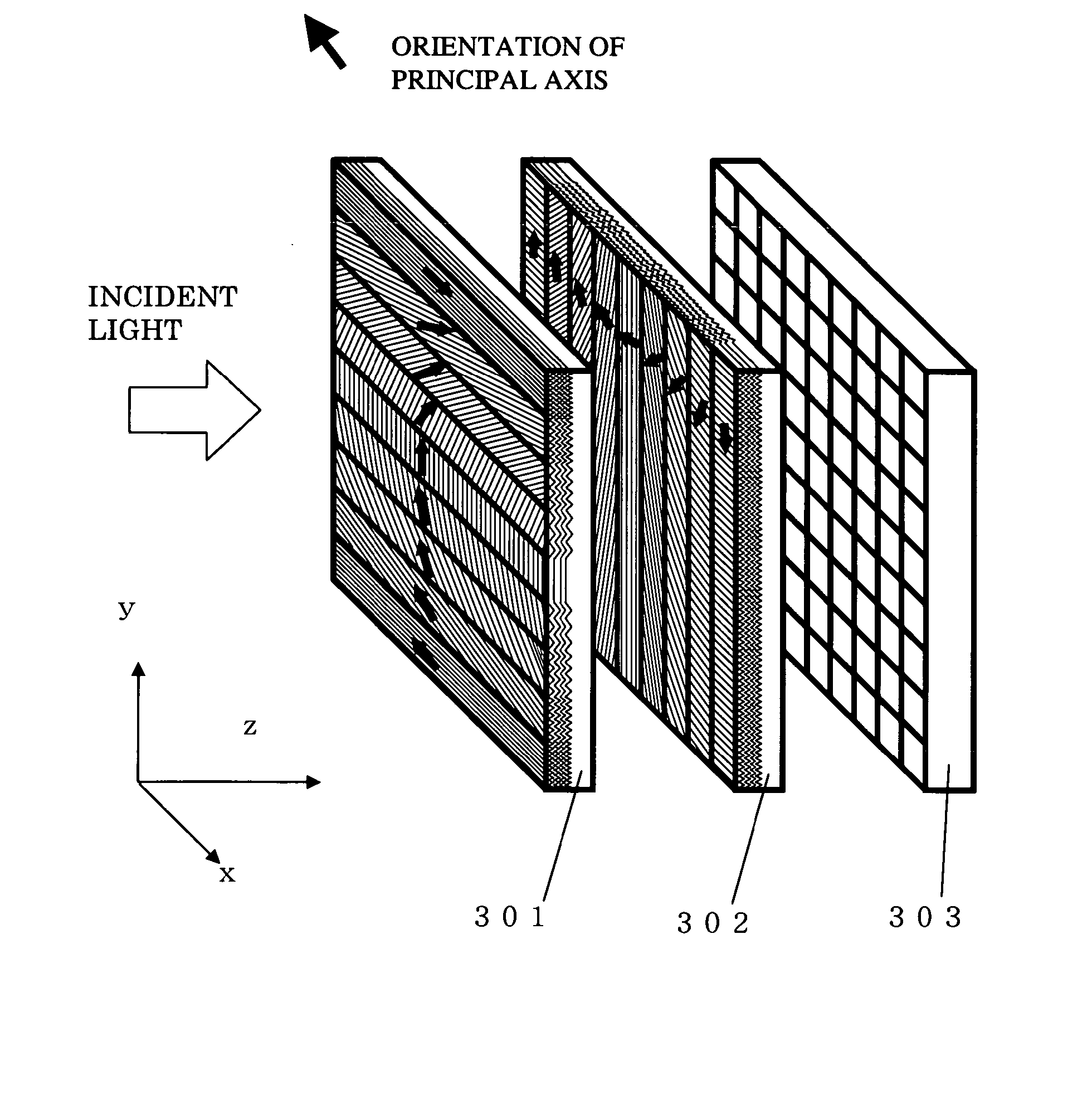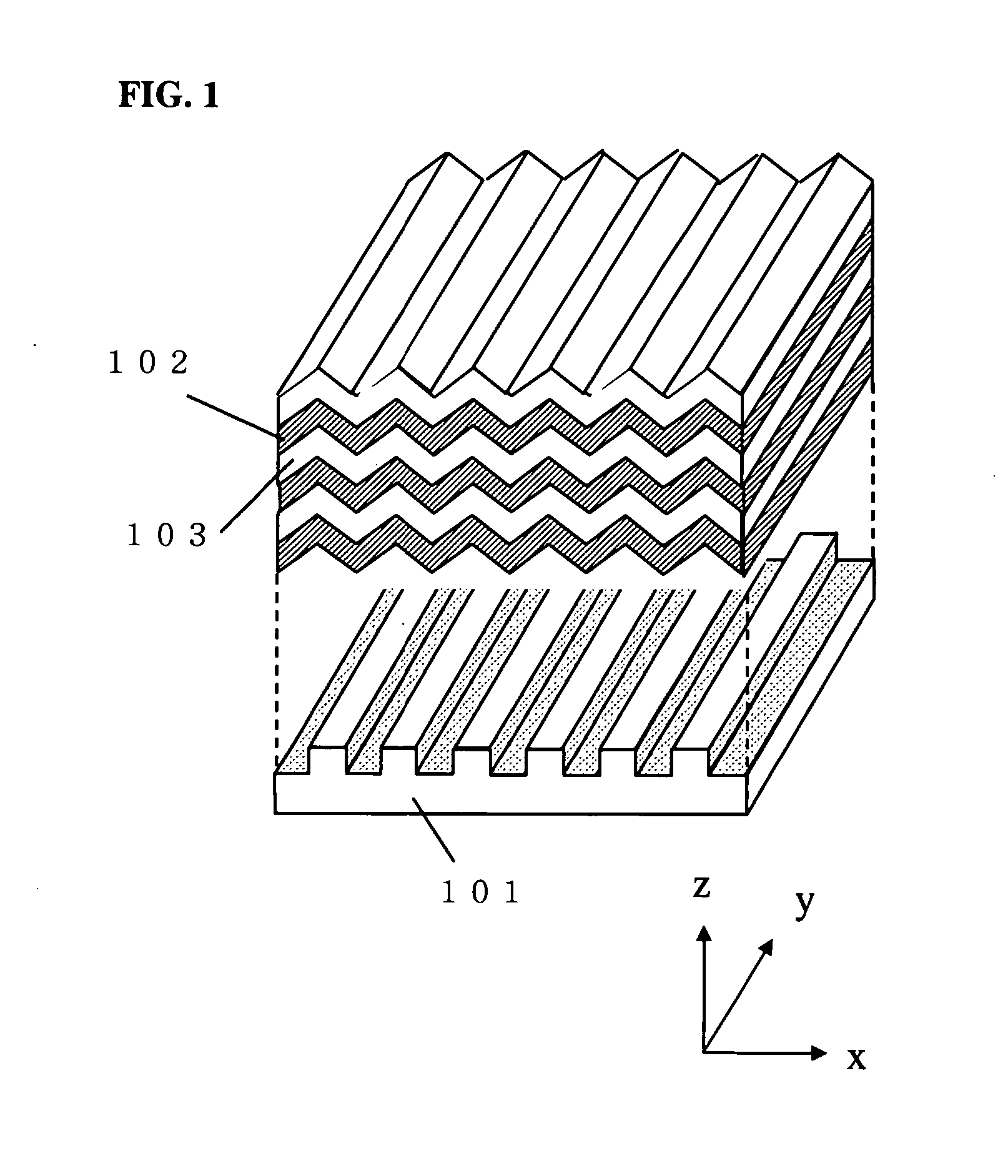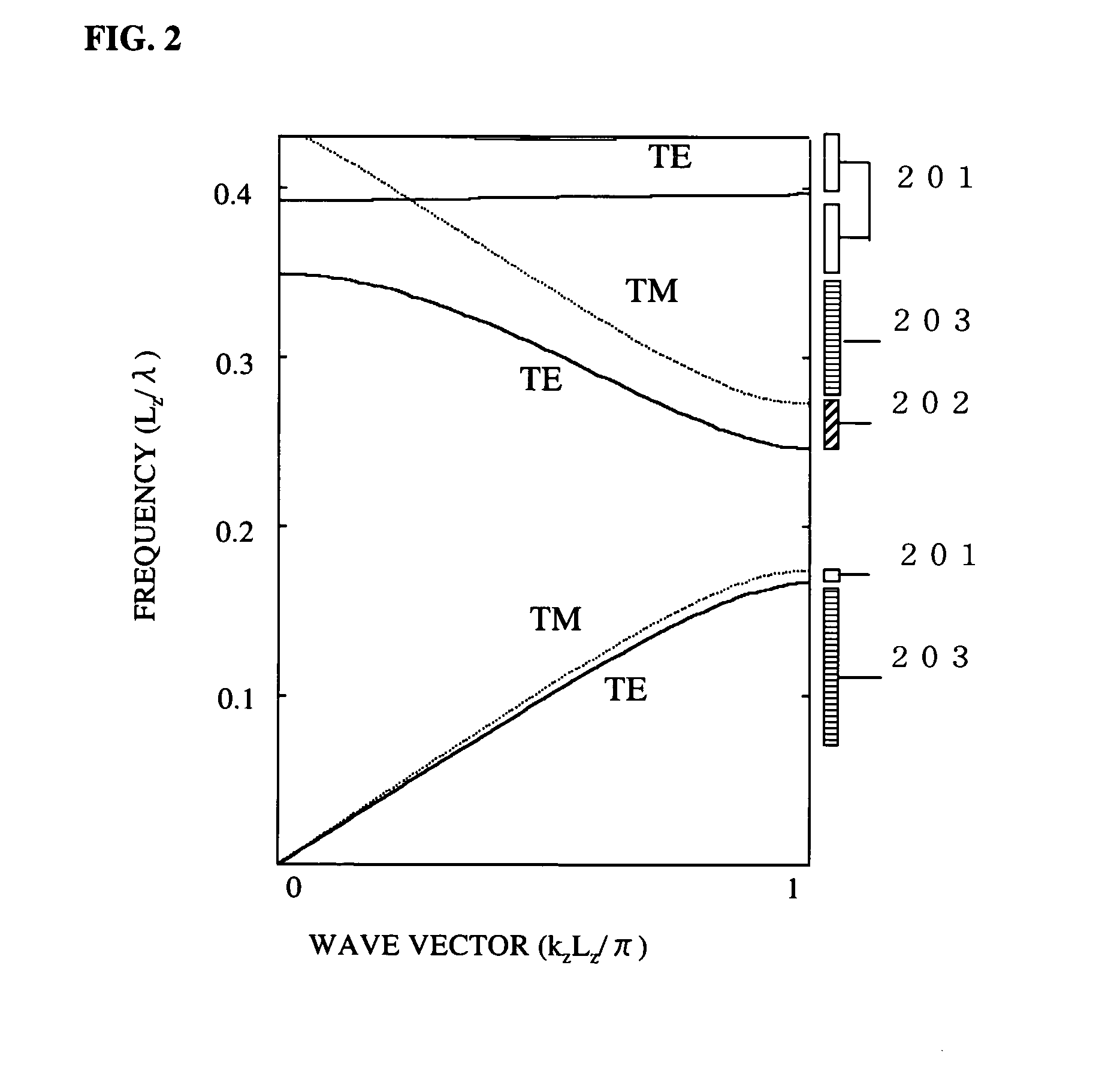Ellipsometer and Ellipsometry
a technology of optical polarization analysis and ellipsometry, which is applied in the direction of optical radiation measurement, polarising elements, instruments, etc., can solve the problem of limited wavelength bandwidth of near-infrared, and achieve the effect of high reliability
- Summary
- Abstract
- Description
- Claims
- Application Information
AI Technical Summary
Benefits of technology
Problems solved by technology
Method used
Image
Examples
example 1
[0105] An example in which the wavelength plate array and polarizer array in the polarization analysis device of claims 1 to 6 are integrated is shown in FIG. 20. A polarizer array is created by forming a groove pattern on the substrate 2004 and depositing a multilayered film 2003 on the groove pattern of substrate 2004. A termination layer 2002 of the polarizer array layer is deposited quite thickly and, when sputter etching is performed strongly at the same time, the corrugated shape formed by autocloning is eliminated and a level surface is completed. There is no particular problem even when mechanical grinding is used to smooth the surface. Thereafter, a wavelength plate array is created by newly forming a wavelength plate line and space pattern by means of lithography and depositing a multilayered film 2001 by means of autocloning. For alignment of the patterns of the polarizer array and wavelength plate array, alignment markers may be placed on a portion of the substrate befor...
example 2
[0106]FIG. 21 shows another example that integrates the wavelength plate array and polarizer array of the polarization analysis device of claims 1 to 6. In this case, integration can be implemented by forming a groove pattern on the upper and rear sides of a substrate 2102 and forming a wavelength plate array layer 2101 and a polarizer array layer 2103 by means of autocloning. For pattern alignment, a transparent substrate such as SiO2 may be used for the substrate 2102 and alignment markers may be added to the substrate. A small polarization analysis device can be implemented by combining the integrated wavelength plate / polarizer array with a light-receiving element array 2104.
example 3
[0107] Although also clear from FIGS. 4 and 7, the position of zero intensity appears as a line rather than a spot when a certain specified polarized wave enters either a wavelength plate angle variation-type polarization analysis device or a wavelength plate phase difference variation-type polarization analysis device. For example, in the case of an angle variation-type polarization analysis device (FIG. 4), when clockwise or counterclockwise circularly polarized light enters the polarization analysis device, in the case of a phase difference variation-type polarization analysis device (FIG. 7), and when linearly polarized light of the same direction as the principal axis angle of the wavelength plate or of a direction orthogonal to the direction of the principal axis angle enters the polarization analysis device, the intensity distribution is linear. When dark spot detection is adopted as the polarization analysis algorithm, the bottom position (or peak position) of these singular...
PUM
 Login to View More
Login to View More Abstract
Description
Claims
Application Information
 Login to View More
Login to View More - R&D
- Intellectual Property
- Life Sciences
- Materials
- Tech Scout
- Unparalleled Data Quality
- Higher Quality Content
- 60% Fewer Hallucinations
Browse by: Latest US Patents, China's latest patents, Technical Efficacy Thesaurus, Application Domain, Technology Topic, Popular Technical Reports.
© 2025 PatSnap. All rights reserved.Legal|Privacy policy|Modern Slavery Act Transparency Statement|Sitemap|About US| Contact US: help@patsnap.com



